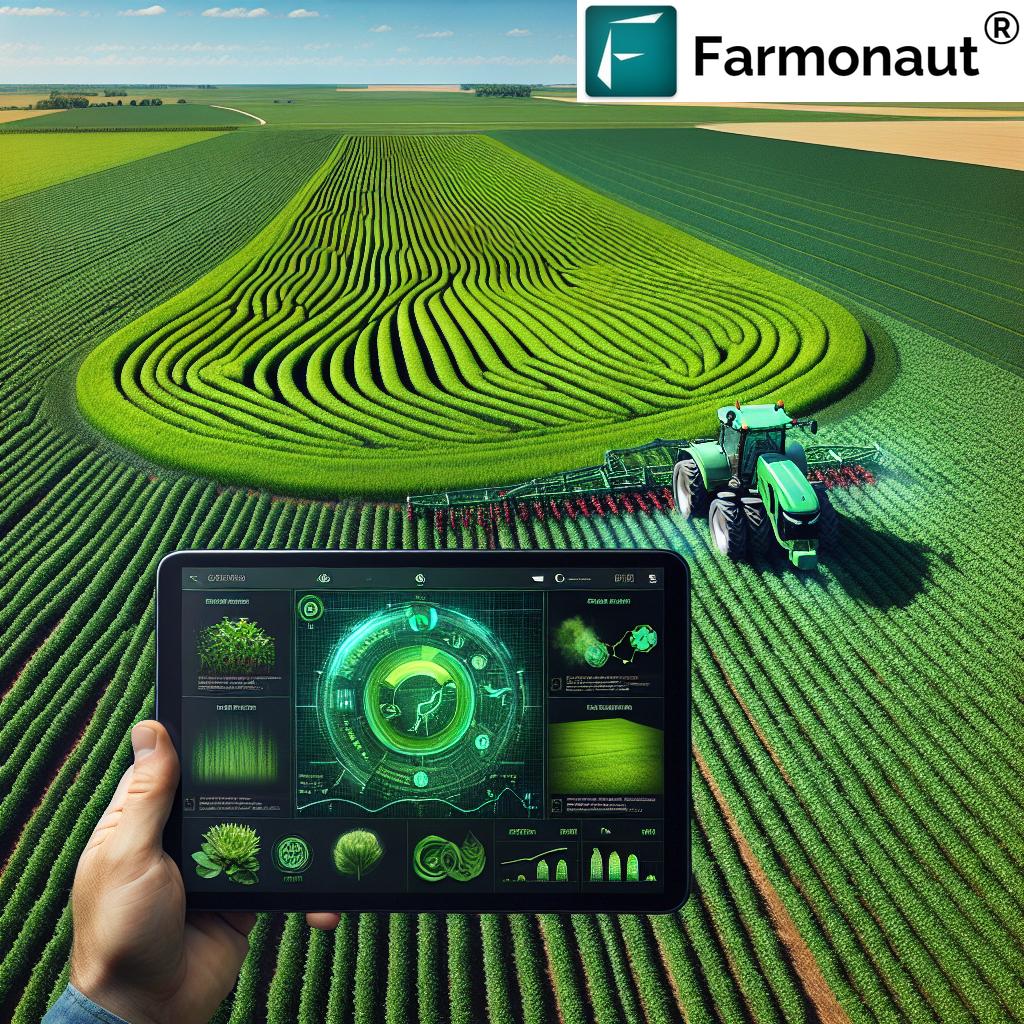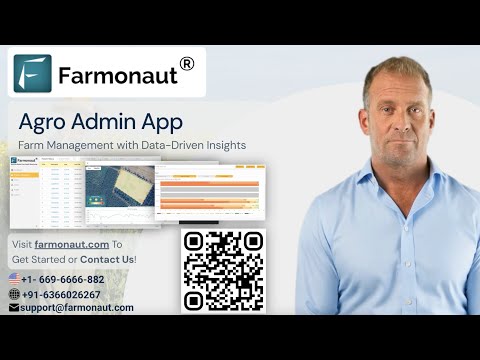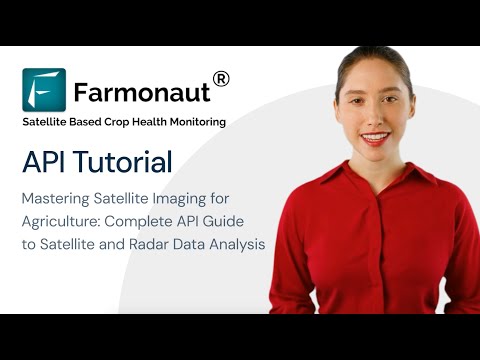
Revolutionize Your Farm: Precision Agriculture Techniques for Maximizing Crop Yields in Southern Illinois
In the heart of the United States, where the fertile plains of Southern Illinois meet the rolling hills of Western Kentucky and the rich soils of Ohio, a revolution in farming is underway. We’re not talking about a simple upgrade in equipment or a new variety of seed. No, this is a fundamental shift in how we approach agriculture, one that promises to transform the very nature of farming in our region and beyond.
Welcome to the world of precision agriculture, where cutting-edge technology meets time-honored farming traditions to create a new paradigm in crop production. In this comprehensive guide, we’ll explore how farmers in Southern Illinois and neighboring regions can harness the power of precision agriculture techniques to maximize their crop yields, optimize resource use, and boost their bottom line.
Understanding Precision Agriculture: A New Era for Southern Illinois Farmers
Precision agriculture, also known as precision farming or smart farming, is an approach that uses advanced technologies to manage fields and crops to ensure optimal health and productivity while minimizing waste and environmental impact. This method is particularly relevant for the diverse agricultural landscape of Southern Illinois, where variable soil types, microclimates, and topography create unique challenges and opportunities for farmers.
At its core, precision agriculture is about doing the right thing, in the right place, at the right time. It’s a data-driven approach that allows farmers to make informed decisions based on real-time information about their fields, crops, and local conditions. By leveraging technologies such as GPS, satellite imagery, IoT sensors, and advanced analytics, farmers can gain unprecedented insights into their operations and take actions with pinpoint accuracy.
The Role of Climate and Geography in Southern Illinois Agriculture
Before we dive deeper into precision agriculture techniques, it’s crucial to understand the unique climate and geographical features of Southern Illinois that make this approach so valuable:
- Variable Soil Types: The region boasts a mix of fertile loess soils, alluvial deposits, and glacial till, each with its own characteristics and management needs.
- Diverse Topography: From flat prairies to rolling hills, the varied landscape influences water drainage, erosion patterns, and microclimate conditions.
- Climate Variability: Southern Illinois experiences hot summers and mild winters, but with significant year-to-year variations that can impact crop planning and management.
- Water Resources: While generally well-watered, the region can experience periodic droughts, making efficient water management crucial.
These factors create a complex agricultural environment where one-size-fits-all approaches often fall short. This is where precision agriculture shines, allowing farmers to tailor their practices to the specific needs of each acre.
Key Components of Precision Agriculture for Southern Illinois Farms
Let’s explore the essential elements of precision agriculture that are transforming farming practices in our region:
1. Satellite Crop Monitoring and Remote Sensing
One of the most powerful tools in the precision agriculture toolkit is satellite crop monitoring. This technology allows farmers to keep a watchful eye on their fields without setting foot in them. Here’s how it works:
- Vegetation Index Analysis: Satellites capture multispectral images of fields, which are then analyzed to produce vegetation indices like NDVI (Normalized Difference Vegetation Index). These indices provide valuable insights into crop health, stress levels, and potential yield.
- Early Problem Detection: By comparing satellite images over time, farmers can spot issues like pest infestations, disease outbreaks, or nutrient deficiencies weeks before they become visible to the naked eye.
- Yield Prediction: Advanced algorithms can use satellite data to predict crop yields with increasing accuracy, helping farmers make informed decisions about harvesting and marketing.
Farmonaut, a leading provider of precision agriculture solutions, offers state-of-the-art satellite monitoring services that are particularly well-suited to the diverse agricultural landscape of Southern Illinois. Their platform provides farmers with easy-to-interpret imagery and actionable insights, enabling them to make data-driven decisions throughout the growing season.
2. Variable Rate Technology (VRT)
Variable rate technology is a game-changer for Southern Illinois farmers dealing with diverse soil types and varying field conditions. VRT allows for the precise application of inputs such as fertilizers, seeds, and pesticides based on the specific needs of different areas within a field. Here’s how it benefits farmers:
- Optimized Input Use: By applying inputs at variable rates according to soil fertility, crop health, and yield potential, farmers can reduce waste and improve efficiency.
- Improved Crop Quality: Tailoring input application to specific field zones can lead to more uniform crop growth and better overall quality.
- Cost Savings: By avoiding over-application of inputs in areas that don’t need them, farmers can significantly reduce their input costs.
- Environmental Benefits: Precise application minimizes the risk of nutrient runoff, protecting local water resources and ecosystems.
Implementing VRT requires specialized equipment and software, but the return on investment (ROI) can be substantial, especially for larger operations or those dealing with highly variable field conditions.
3. Soil Fertility Management
Effective soil fertility management is crucial for maximizing crop yields in Southern Illinois, where soil types can vary significantly even within a single field. Precision agriculture offers several tools to help farmers optimize their soil management practices:
- Grid Soil Sampling: This technique involves taking soil samples at regular intervals across a field to create detailed maps of soil pH, nutrient levels, and organic matter content.
- Sensor-Based Soil Analysis: Advanced sensors can provide real-time data on soil moisture, temperature, and nutrient levels, allowing for more responsive management decisions.
- Precision Liming and Fertilization: Using soil map data and VRT equipment, farmers can apply lime and fertilizers at variable rates to address specific soil needs across their fields.
By leveraging these precision techniques, Southern Illinois farmers can ensure that their soils provide the optimal growing conditions for their crops, leading to improved yields and more sustainable land management practices.
4. Precision Planting Systems
Precision planting is another key component of modern agriculture that can significantly impact crop yields. These systems offer several advantages:
- Accurate Seed Placement: Precision planters can control the depth and spacing of seeds with incredible accuracy, ensuring optimal plant population and distribution.
- Variable Rate Seeding: By varying seed rates based on soil type, topography, and other factors, farmers can optimize plant populations across their fields.
- Real-Time Monitoring: Advanced planters provide real-time feedback on planting performance, allowing operators to make immediate adjustments if needed.
For Southern Illinois farmers, precision planting can be particularly beneficial in areas with variable soil types or rolling terrain, where uniform planting can be challenging.
Digital Farming Solutions: Bringing It All Together
The true power of precision agriculture lies in the integration of various technologies and data sources to create a comprehensive farm management system. Digital farming solutions like those offered by Farmonaut provide a central platform for collecting, analyzing, and acting on farm data. These platforms typically include:
- Farm Management Software: User-friendly interfaces that allow farmers to view satellite imagery, create prescriptions for variable rate applications, and track field operations.
- Data Analytics Tools: Advanced algorithms that process data from various sources to provide insights and recommendations.
- Mobile Apps: Smartphone applications that enable farmers to access their farm data and make decisions from anywhere.
- Integration Capabilities: The ability to connect with various farm equipment and sensors to create a seamless flow of information.
These digital solutions are particularly valuable for Southern Illinois farmers, as they can help manage the complexities of farming in a region with diverse soil types, variable weather patterns, and a range of crop options.
The Impact of Precision Agriculture on Southern Illinois Farming
The adoption of precision agriculture techniques is having a profound impact on farming in Southern Illinois and neighboring regions. Let’s explore some of the key benefits:
Increased Crop Yields
By optimizing every aspect of crop production, from planting to harvest, precision agriculture has the potential to significantly increase yields. Farmers in Southern Illinois have reported yield increases of up to 20% or more after implementing precision techniques.
Improved Resource Efficiency
Precision agriculture allows farmers to use inputs more efficiently, reducing waste and minimizing environmental impact. This is particularly important in Southern Illinois, where protecting water resources and maintaining soil health are critical concerns.
Enhanced Decision-Making
With access to real-time data and advanced analytics, farmers can make more informed decisions about every aspect of their operations. This leads to better risk management and more consistent results, even in the face of challenging weather conditions.
Sustainability and Environmental Stewardship
By optimizing input use and minimizing waste, precision agriculture helps farmers reduce their environmental footprint. This aligns well with the growing emphasis on sustainable farming practices in Southern Illinois and across the United States.
Economic Benefits
While the initial investment in precision agriculture technology can be significant, many farmers find that the long-term economic benefits are substantial. Increased yields, reduced input costs, and improved efficiency all contribute to a stronger bottom line.
“Precision agriculture can increase crop yields by up to 30% while reducing water usage by 20-50% in regions like Southern Illinois.”
Implementing Precision Agriculture: A Step-by-Step Guide for Southern Illinois Farmers
If you’re a farmer in Southern Illinois looking to implement precision agriculture techniques on your farm, here’s a step-by-step guide to get you started:
- Assess Your Current Operations: Begin by evaluating your current farming practices, identifying areas where precision techniques could have the most impact.
- Set Clear Goals: Define specific objectives for implementing precision agriculture, such as increasing yields, reducing input costs, or improving sustainability.
- Invest in Technology: Start with basic precision agriculture tools like GPS-guided equipment and satellite crop monitoring services. Farmonaut offers an excellent entry point with their user-friendly platform.
- Collect and Analyze Data: Begin gathering data on your fields, including soil samples, yield maps, and satellite imagery. Use this data to create management zones within your fields.
- Implement Variable Rate Applications: Based on your management zones, start applying inputs at variable rates. This might include fertilizers, seeds, or crop protection products.
- Monitor and Adjust: Continuously monitor your crops using satellite imagery and other precision tools. Use this information to make real-time adjustments to your management practices.
- Evaluate and Refine: At the end of each season, evaluate the results of your precision agriculture practices. Use this information to refine your approach for the next growing season.
Remember, implementing precision agriculture is a journey, not a destination. It requires ongoing learning and adaptation to fully realize its benefits.
Precision Agriculture Techniques Comparison
| Farming Aspect | Traditional Method | Precision Agriculture with Farmonaut | Estimated Improvement |
|---|---|---|---|
| Crop Monitoring | Visual inspection, periodic scouting | Satellite-based monitoring, AI-driven analysis | Up to 2 weeks earlier problem detection |
| Fertilizer Application | Uniform application across fields | Variable rate application based on soil fertility maps | 15-20% reduction in fertilizer use |
| Irrigation Management | Scheduled watering, manual adjustments | Precision irrigation based on real-time soil moisture data | 30-50% reduction in water usage |
| Pest Control | Blanket spraying of pesticides | Targeted application based on pest hotspot detection | Up to 40% reduction in pesticide use |
| Yield Prediction | Historical data and visual estimates | AI-powered yield prediction using satellite data | Accuracy improved by 25-30% |
| Overall Yield Impact | Baseline | Optimized crop management through precision techniques | 10-30% increase in crop yields |
“Satellite-based crop monitoring systems can detect plant stress up to 2 weeks earlier than visual inspection, enabling timely interventions.”
The Future of Precision Agriculture in Southern Illinois
As we look to the future, the role of precision agriculture in Southern Illinois is only set to grow. Here are some trends and developments to watch:
- Integration of Artificial Intelligence: AI and machine learning algorithms will become increasingly sophisticated, providing even more accurate predictions and recommendations.
- Expansion of IoT Sensors: The proliferation of low-cost, connected sensors will allow for even more granular monitoring of field conditions.
- Drone Technology: While satellite imagery is powerful, drones offer the potential for on-demand, high-resolution field imaging and even precise application of inputs.
- Climate-Smart Agriculture: Precision agriculture tools will play a crucial role in helping farmers adapt to and mitigate the effects of climate change.
- Data Interoperability: Efforts to standardize agricultural data formats will make it easier for farmers to integrate information from various sources and equipment manufacturers.
For Southern Illinois farmers, staying informed about these developments and being open to adopting new technologies will be key to remaining competitive in an ever-evolving agricultural landscape.
Frequently Asked Questions
Q: How much does it cost to implement precision agriculture techniques?
A: The cost can vary widely depending on the specific technologies adopted. Entry-level solutions like Farmonaut’s satellite monitoring services can be quite affordable, while more comprehensive systems involving equipment upgrades may require significant investment. Many farmers find that the ROI justifies the costs within a few growing seasons.
Q: Is precision agriculture only suitable for large farms?
A: While larger operations may see more immediate benefits due to economies of scale, precision agriculture techniques can be valuable for farms of all sizes. Many tools, like satellite crop monitoring, are scalable and can provide benefits even to smaller operations.
Q: How does precision agriculture help with sustainability?
A: By optimizing input use and improving resource efficiency, precision agriculture helps reduce the environmental impact of farming. This includes reducing water usage, minimizing chemical runoff, and improving soil health through targeted management practices.
Q: What kind of training is needed to use precision agriculture tools?
A: The level of training required depends on the specific tools and technologies adopted. Many modern precision agriculture platforms, like Farmonaut, are designed to be user-friendly and intuitive. However, some technical training may be necessary for more advanced systems or equipment operation.
Q: How does precision agriculture work with crop insurance programs?
A: Precision agriculture data can be valuable for crop insurance purposes, providing accurate records of planting dates, input applications, and yield data. Some insurance programs may offer discounts or more favorable terms for farmers using precision agriculture techniques due to the reduced risk profile.
Conclusion: Embracing the Precision Agriculture Revolution in Southern Illinois
As we’ve explored throughout this guide, precision agriculture offers immense potential for farmers in Southern Illinois and neighboring regions to optimize their operations, increase yields, and improve sustainability. By leveraging advanced technologies like satellite crop monitoring, variable rate applications, and data-driven decision-making tools, farmers can address the unique challenges posed by the region’s diverse landscape and variable climate.
The journey into precision agriculture may seem daunting, but with partners like Farmonaut offering accessible, user-friendly solutions, the transition can be smoother than you might expect. The key is to start small, focus on areas where you can see immediate benefits, and gradually expand your use of precision techniques as you become more comfortable with the technology.
Remember, the goal of precision agriculture is not to replace the knowledge and experience of farmers, but to enhance it. By combining your understanding of your land with the power of data and technology, you can take your farming operation to new heights of productivity and sustainability.
As we face the challenges of feeding a growing global population while protecting our natural resources, precision agriculture will play an increasingly vital role. By embracing these technologies and techniques, Southern Illinois farmers can position themselves at the forefront of this agricultural revolution, ensuring a prosperous and sustainable future for generations to come.
Ready to take the first step into precision agriculture? Explore Farmonaut’s satellite crop monitoring solutions and see how they can transform your farming operation today!

Download Farmonaut’s Mobile Apps:


Farmonaut Subscriptions




